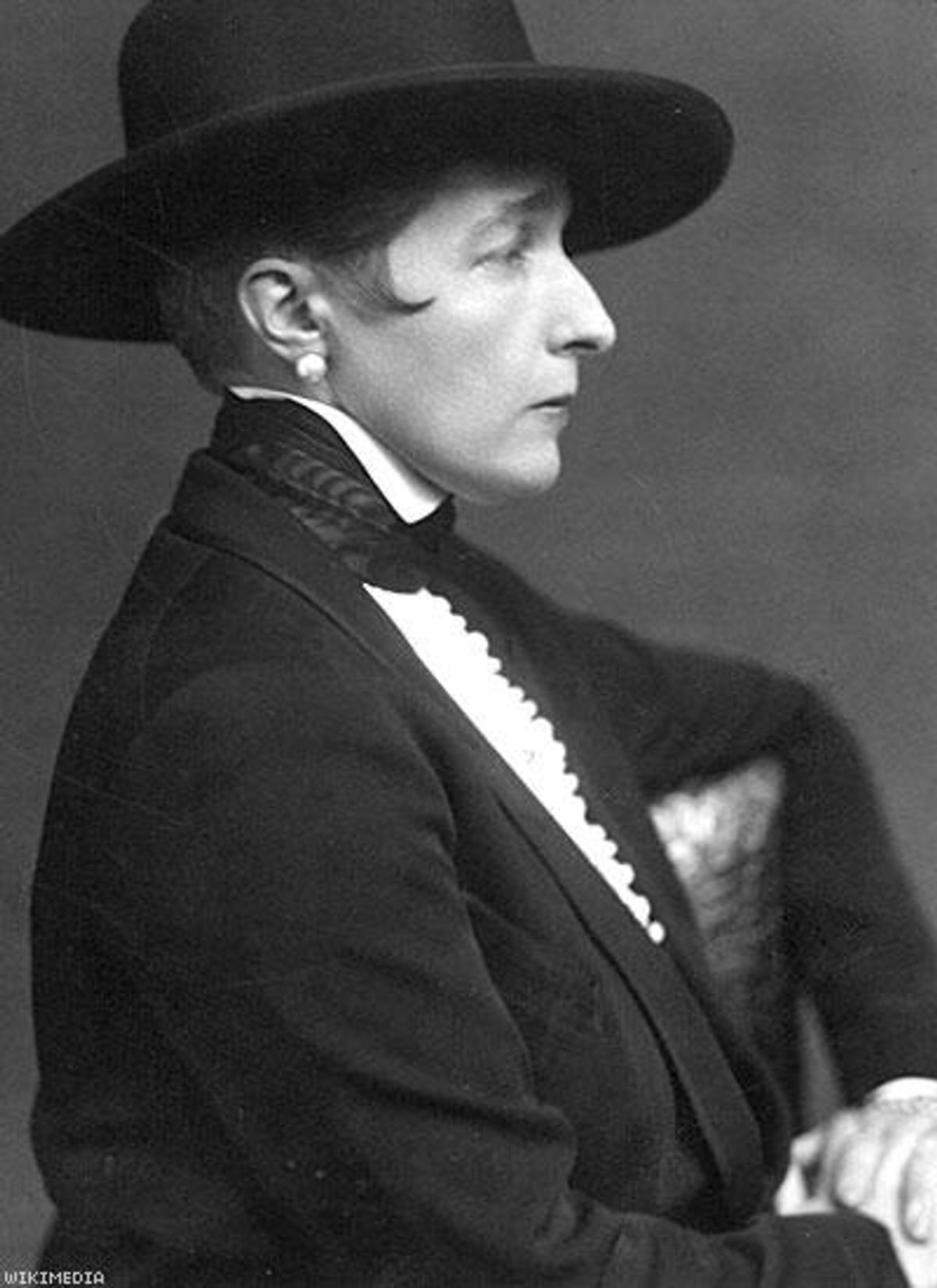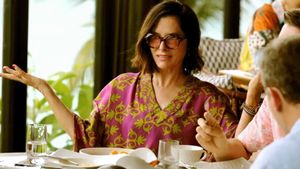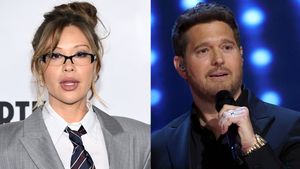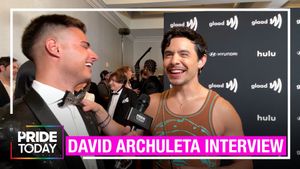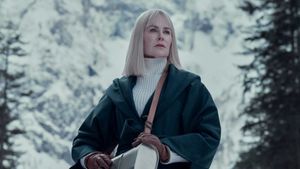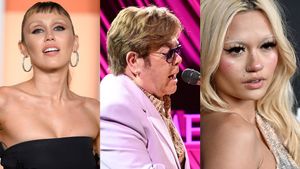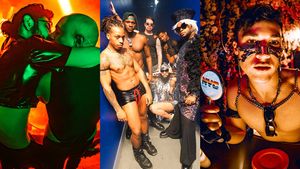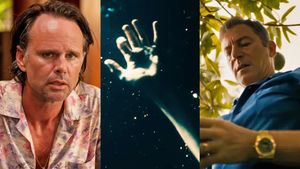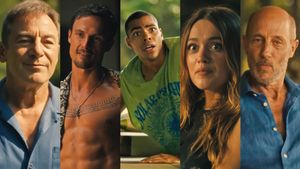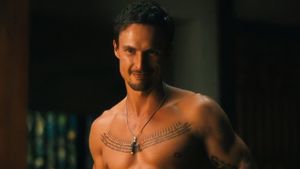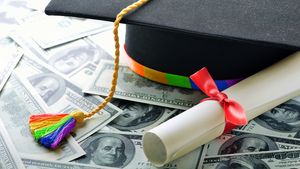London's Trafalgar Square is famous for its profusion of pigeons, Nelson's Column (don't get excited -- it's a statue of an 18th-century British naval commander perched on a high plinth), and great British art. It's home to the National Gallery, which houses the nation's painting collection, and the National Portrait Gallery. Well, technically speaking, the portrait gallery isn't exactly on the square; its entrance is around the corner on St. Martin's Place.
There's something appropriate about this not-quite-prime placement. Portrait galleries are to art what pub quizzes are to information: They reward trivia over deep knowledge, identification over appreciation. In a portrait gallery, the goal is not to marvel at the artist's skill in evoking his or her subject but, rather, to recognize the sitter. Whenever I'm wandering around one, I'm mentally keeping tabs on how many of the famous faces hanging on the walls I know, the way I might tot up the number of questions I get right on an episode of Jeopardy!.
But this running pop quiz isn't the only reason I love to visit portrait collections. They're essential stops on any tourist itinerary because, painting for painting, they're the gayest galleries you can find. I don't imagine that their curators consciously set out to achieve this distinction, but building and displaying a collection of portraits that represent a nation's great men and women tends to put gay and lesbian citizens right where they deserve to be: on museum walls. (
Transgender subjects are still vastly underrepresented in the portrait collections on both sides of the Atlantic, however.) And since gallerists often organize their collections by occupation, it would take a concentrated effort to exclude queers from certain traditionally, some might say stereotypically, gay-friendly fields, such as the arts.
Of course, that doesn't mean it's always easy to find the queers in these august galleries. There's no special pink sticker next to their portraits; and while the National Portrait Gallery's impressive online database does group some artworks together -- paintings that feature interesting carpets and textiles or eye-catching jewelry, for example -- it hasn't created a thematic tag for out gay, lesbian, and bi subjects. No matter. The stately homos of England can be located using the tools our people have used to find each other since time immemorial: by reading them -- and in certain rooms of the London gallery, my gaydar was pinging like Grindr on the Provincetown ferry.
Allow me to share a few time-tested tips for locating our gay brothers and sisters.
Learn from the labels. In London, the wall tags that provide information about the works on display rarely give any indication of the subject's sexuality. However, I received a history lesson from at least one caption. Next to a striking Cecil Beaton portrait of a young man looking away from the artist, his eyes slightly downcast as if to avoid notice, the label indicated that William John Christopher Vassall was a junior diplomat in Moscow who was "blackmailed by the KGB for his homosexuality" in the 1950s. Other display text is less helpful, however: Though the word queen appears many times on the National Portrait Gallery's walls, disappointingly, it is always in connection with female heads of state. Similarly, while the mention of composer Frederick Delius' male amanuensis made me wonder, the history books suggest theirs was a platonic relationship.
Gays sometimes come in pairs. Since portrait galleries focus on outstanding individuals, subjects are rarely painted or photographed with their significant others. Nevertheless, I spied two gay couples in London. Tenor Peter Pears is gazing lovingly at his "life-long companion," composer Benjamin Britten, in Kenneth Green's 1943 double portrait; and a picture of Gilbert & George, the dress-alike artistic collaborators who have been a couple for nearly 50 years, hangs in a special exhibition of Lord Snowdon's photography.
Gays hang out together in galleries, as in life. Gilbert & George weren't the only homosexuals in the Lord Snowdon exhibit -- by my very informal count, at least five of Snowdon's subjects were queer, including bisexual writer and jazz singer George Melly and writer-gardener Vita Sackville-West. And in Room 31, where the Bloomsbury set is gathered, you can't turn around without finding a gay man, his bisexual wife, and the woman she was crushed out on. Nearby, there are enough portraits of Sackville-West's female lovers to fill a small gallery -- from Lady Ottoline Morrell, painted with her teeth bared by her onetime lover Augustus John, to Violet Trefusis, insouciantly crossing her legs in Jacques-Emile Blanche's 1926 oil.
You don't always need help to figure out that someone is gay. Sometimes further study is required before you can comfortably categorize a subject as one of us. But not always. Some are obvious: A person who had never heard of The Well of Loneliness would have no problem clocking Radclyffe Hall, who sports short hair, a masculine suit, a cravat, and a monocle in Charles Buchel's 1918 portrait. Others are famously, notoriously, spectacularly gay: I found Paul Hamann's bronze of Noel Coward disturbingly cold, but that didn't prevent me from forging a queer connection with its subject.
Gay artists often portray gay subjects. Prolific queer artists like Cecil Beaton, who has more than 1,000 photographs in the National Portrait Gallery's collection, worked with all kinds of subjects, but seeking out the work of artists who chose to ignore the conventions of their times frequently leads to sexual-minority subjects. Dora Carrington (portrayed by Emma Thompson in the 1995 biopic Carrington) has a 1920 portrait of E.M. Forster that shows the then-closeted novelist in a slumped posture that suggests he is carrying a heavy burden on his shoulders. And, of course, sometimes out artists are drawn to unconventional subjects who may or may not have been heterosexual. Lesbian painter Dame Ethel Walker, who famously disliked makeup and form-obscuring clothing, found a Modigliani-like beauty in actress Flora Robson, who was conventionally considered "plain."
Read the room. Sometimes you just have to go with your gut and look it up later. I confess that my familiarity with 18th-century British statesmen isn't everything it could be, but while in the "Expansion and Empire" gallery, I scribbled down the names of a few fellows in uniform who caught my eye. There was something in the jaunty way Sir James Brooke, an Army officer and the "first Raja of Sarawak," was posed that sent me to a search engine -- and sure enough, I found rumored relationships with princes and stories of a taste for rough trade. And don't even get me started on Boy Scouts founder Robert Baden-Powell and his clone mustache.
Don't be fooled by fashion. A jaunty scarf or a particularly well-tended beard might sometimes serve as an indicator that the subject was not 100 percent straight, but remember that style signals can get crossed. Mystery writer Dorothy L. Sayers is wearing a suit and tie in Sir William Oliphant Hutchison's portrait, but that reflects her academic leanings and down-to-earth style rather than a Sapphic sensibility.
Of course, LGBT gallery visitors aren't only interested in seeing portraits of gay and bisexual subjects -- judging from the crowd rapt by Sam Taylor-Johnson's video of David Beckham taking a nap, the straight soccer player has quite a following among our people.
